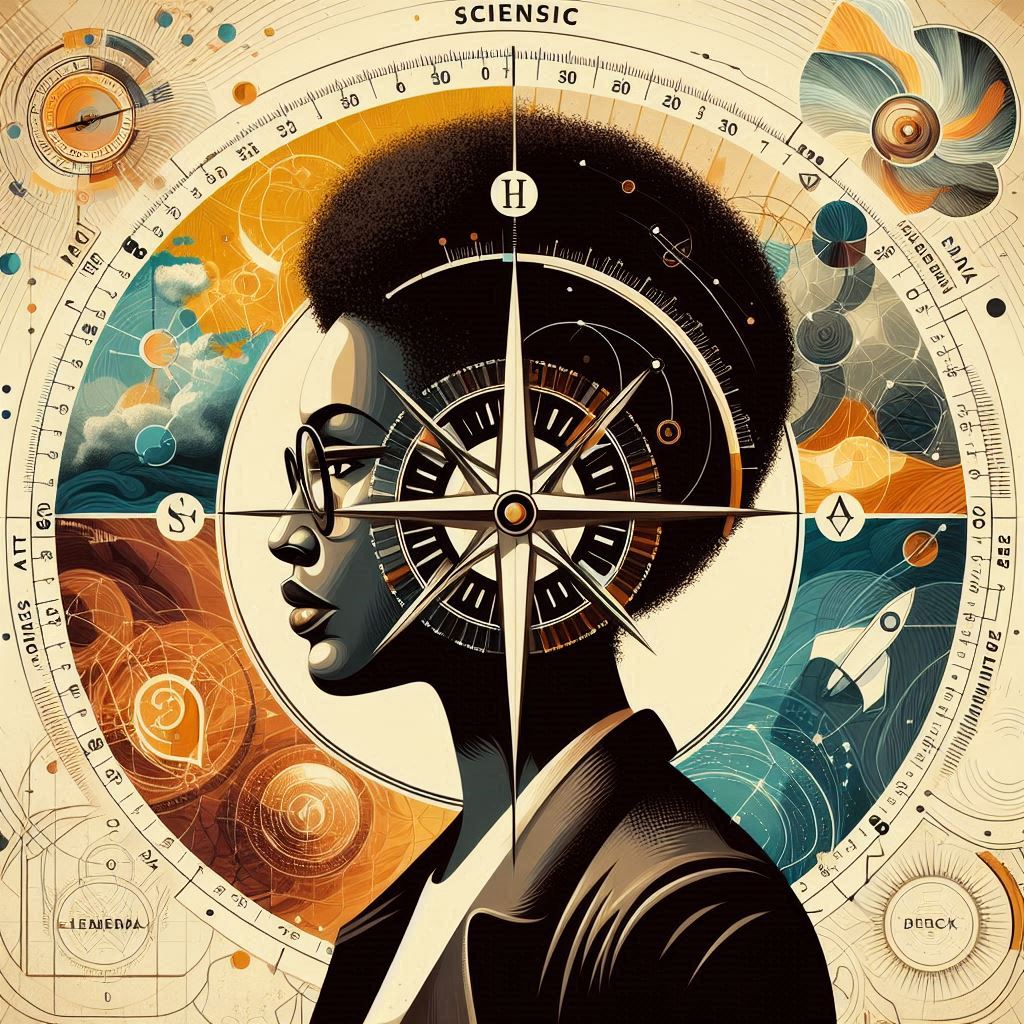
The Art and Science of Decision Making: Decision-making is the cornerstone of leadership. It’s the process of choosing between alternative courses of action, often under pressure, with the goal of achieving specific outcomes. This complex interplay of analysis, intuition, and strategic thinking is what sets exceptional leaders apart.
The Art and Science of Decision Making: Understanding the Decision-Making Process
The Art and Science of Decision Making: Effective decision-making involves several key stages:
- Problem Identification: Clearly define the problem or challenge at hand.
- Information Gathering: Collect relevant data and information from various sources.
- Option Generation: Brainstorm and evaluate potential solutions or alternatives.
- Analysis: Weigh the pros and cons of each option, considering factors like feasibility, impact, and risks.
- Decision Making: Select the best course of action based on the analysis.
- Implementation: Develop a plan to execute the chosen decision.
- Evaluation: Assess the outcomes and make necessary adjustments.
The Art and Science of Decision Making: Decision-Making Styles

The Art and Science of Decision Making: Different leaders have different decision-making styles. Some common styles include:
- Autocratic: The leader makes decisions independently without seeking input from others.
- Democratic: The leader involves the team in the decision-making process.
- Consultative: The leader seeks input from others before making a decision.
- Laissez-faire: The leader delegates decision-making authority to the team.
The best style depends on the situation and the team’s capabilities. Effective leaders are adaptable and can switch between styles as needed.
Factors Influencing Decision Making
Several factors can influence decision-making:
- Cognitive biases: These are mental shortcuts that can lead to errors in judgment. Leaders must be aware of common biases like confirmation bias, anchoring bias, and sunk cost fallacy.
- Risk tolerance: The willingness to take risks varies among individuals and organizations. Leaders must assess their risk tolerance and make decisions accordingly.
- Time pressure: Some decisions must be made quickly, while others require more deliberation. Leaders must balance speed and accuracy.
- Stakeholder influence: The opinions and preferences of stakeholders can impact decision-making. Leaders must consider the interests of all relevant parties.
The Art and Science of Decision Making: Decision-Making Tools and Techniques
The Art and Science of Decision Making: Several tools and techniques can enhance decision-making:
- Decision matrices: These matrices help compare different options based on specific criteria.
- Cost-benefit analysis: This technique evaluates the potential costs and benefits of each option.
- SWOT analysis: Understanding the organization’s strengths, weaknesses, opportunities, and threats can inform decision-making.
- Scenario planning: This involves creating different potential future scenarios to assess their impact on decision outcomes.
- Data analytics: Leveraging data to inform decisions can improve accuracy and reduce uncertainty.
The Art and Science of Decision Making: Building a Decision-Making Culture

The Art and Science of Decision Making: A strong decision-making culture is essential for organizational success. Leaders can foster this culture by:
- Empowering employees: Encourage employees to take ownership of decisions within their scope of responsibility.
- Promoting open communication: Create a safe environment for sharing ideas and perspectives.
- Celebrating successes and learning from failures: Foster a culture of experimentation and continuous improvement.
- Providing decision-making training: Equip employees with the tools and knowledge to make informed decisions.
Effective decision-making is a complex process that requires a combination of analytical skills, intuition, and experience. By understanding the key factors influencing decisions, leaders can make better choices that drive organizational success.
Common Decision-Making pitfalls
Here are some common pitfalls that can hinder effective decision-making:
Cognitive Biases
- Confirmation Bias: Favoring information that confirms pre-existing beliefs while ignoring contradictory evidence.
- Anchoring Bias: Relying too heavily on the first piece of information encountered (the “anchor”) when making decisions.
- Overconfidence Bias: Overestimating one’s own abilities or the accuracy of one’s predictions.
Emotional Influences
- Emotional Decision-Making: Allowing emotions to drive decisions rather than objective analysis.
- Fear of Failure: Avoiding decisions due to the fear of making a mistake, leading to indecision or overly cautious choices.
Information-Related Issues
- Information Overload: Being overwhelmed by too much information, which can lead to analysis paralysis.
- Lack of Information: Making decisions without sufficient data or understanding of the situation.
Group Dynamics
- Groupthink: Prioritizing consensus over critical evaluation, leading to poor decision outcomes.
- Dominance of Strong Personalities: Allowing dominant individuals to influence decisions disproportionately, potentially sidelining valuable input from others.
Risk Management
- Ignoring Risks: Failing to adequately consider potential risks and their impact.
- Risk Aversion: Being overly cautious and avoiding risks, which can stifle innovation and growth.
Time Constraints
- Rushed Decisions: Making hasty decisions due to time pressure, without thorough analysis.
- Procrastination: Delaying decisions unnecessarily, which can lead to missed opportunities.
Implementation Challenges
- Poor Execution: Even well-made decisions can fail if not implemented effectively.
- Lack of Follow-Up: Failing to monitor and evaluate the outcomes of decisions, which can prevent learning and improvement.
External Influences
- Stakeholder Pressure: Making decisions based on external pressures rather than what is best for the organization or situation.
- Political Considerations: Allowing internal politics to influence decisions, which can lead to suboptimal outcomes.
Strategies to Avoid Pitfalls
- Awareness and Training: Educating oneself and the team about common biases and pitfalls.
- Structured Decision-Making Processes: Implementing systematic approaches like decision matrices and SWOT analysis.
- Diverse Perspectives: Encouraging input from a variety of stakeholders to avoid groupthink and gain a well-rounded view.
- Balanced Risk Assessment: Weighing risks and benefits carefully to make informed decisions.
- Regular Review and Feedback: Continuously evaluating decisions and their outcomes to learn and improve.
By being aware of these pitfalls and actively working to mitigate them, leaders can make more effective and informed decisions.
Real-World Examples of Effective Decision-Making
The Art and Science of Decision Making: Here are a few notable examples of effective decision-making in various fields:
Business
- Apple’s Decision to Launch the iPhone: In 2007, Apple, under Steve Jobs’ leadership, decided to enter the mobile phone market with the iPhone. This decision was based on recognizing the potential for a device that combined a phone, an iPod, and an internet communicator. The iPhone revolutionized the smartphone industry and became a cornerstone of Apple’s success.
- Netflix’s Shift to Streaming: In the early 2000s, Netflix transitioned from a DVD rental service to a streaming platform. This decision, driven by the foresight of changing consumer preferences and advancements in internet technology, positioned Netflix as a leader in the entertainment industry.
Healthcare
- New Zealand’s COVID-19 Response: Prime Minister Jacinda Ardern’s decision to implement strict lockdown measures early in the pandemic helped New Zealand control the spread of COVID-19 effectively. This decision was based on scientific advice and a commitment to public health, resulting in relatively low infection and mortality rates.
Technology
- IBM’s Pivot to Cloud Computing and AI: IBM’s decision to shift its focus from hardware to cloud computing and artificial intelligence has been pivotal. This strategic move allowed IBM to remain relevant and competitive in the rapidly evolving tech industry.
Sports
- Leicester City’s Premier League Win: In the 2015-2016 season, Leicester City’s management made several strategic decisions, including hiring Claudio Ranieri as the manager and investing in key players. These decisions, combined with effective team management, led to one of the most unexpected and celebrated Premier League victories.
Government
- Singapore’s Urban Planning: Singapore’s government made strategic decisions in urban planning and development, focusing on sustainability and efficiency. Initiatives like the Housing Development Board (HDB) and the creation of green spaces have made Singapore a model for urban development worldwide.
Finance
- Warren Buffett’s Investment Strategies: Warren Buffett, through Berkshire Hathaway, has made numerous effective investment decisions. His long-term investment strategy, focusing on undervalued companies with strong fundamentals, has consistently yielded high returns.
These examples highlight how effective decision-making, grounded in analysis, foresight, and strategic thinking, can lead to significant achievements and success across various domains.
MySchedulr Appointment Bookings
Real-World Examples of Decision-Making failures due to cognitive biases
The Art and Science of Decision Making: Here are some notable examples of decision-making failures influenced by cognitive biases:
Business
- Kodak’s Decline: Kodak’s failure to embrace digital photography is a classic example of status quo bias and sunk cost fallacy. Despite inventing the first digital camera, Kodak was reluctant to shift away from its profitable film business, ultimately leading to its downfall.
- Blockbuster’s Missed Opportunity: Blockbuster’s decision to pass on acquiring Netflix for $50 million in 2000 is often attributed to overconfidence bias. Blockbuster underestimated the potential of the streaming model and overestimated the longevity of its own business model.
Healthcare
- Theranos Scandal: Elizabeth Holmes and her team at Theranos exhibited confirmation bias by selectively presenting data that supported their claims while ignoring evidence that contradicted them. This led to significant financial losses and damaged reputations.
Finance
- 2008 Financial Crisis: The housing bubble and subsequent financial crisis were exacerbated by herd mentality and overconfidence bias. Many financial institutions ignored warning signs and followed the crowd in making risky investments.
Government
- Challenger Space Shuttle Disaster: The decision to launch the Challenger despite concerns about the O-rings’ performance in cold weather was influenced by groupthink. NASA officials downplayed risks and prioritized schedule over safety, leading to a tragic outcome.
Technology
- Microsoft’s Missed Mobile Opportunity: Microsoft’s late entry into the smartphone market, despite early innovations, can be attributed to anchoring bias. The company was anchored to its success with Windows and failed to recognize the shift towards mobile computing.
Military
- Bay of Pigs Invasion: The failed invasion of Cuba in 1961 was a result of groupthink within the Kennedy administration. Advisors suppressed dissenting opinions and overestimated the likelihood of success.
These examples highlight the significant impact cognitive biases can have on decision-making. By being aware of these biases, leaders can take steps to mitigate their influence and make more informed decisions.
How to avoid Cognitive Biases in Decision Making?
Avoiding cognitive biases requires a combination of awareness, strategies, and tools. Here are some practical steps you can take:
- Awareness and Education: Learn about common cognitive biases and how they affect decision-making. Being aware of biases like confirmation bias, anchoring, and overconfidence can help you recognize them in your own thinking.
- Seek Diverse Perspectives: Involve others in your decision-making process. Different viewpoints can help counteract individual biases. Encourage open discussions and consider feedback from people with different backgrounds and expertise.
- Use Structured Decision-Making Processes: Implement frameworks like decision trees, pros and cons lists, or the Six Thinking Hats method. These tools can help you systematically evaluate options and reduce the influence of biases.
- Slow Down: Take your time to make decisions, especially important ones. Rushed decisions are more likely to be influenced by biases. Reflect on your choices and consider potential biases that might be at play.
- Consider the Opposite: Deliberately consider the opposite of your initial decision or belief. This can help you identify and challenge your assumptions and reduce confirmation bias.
- Use Data and Evidence: Base your decisions on objective data and evidence rather than intuition or gut feelings. Analyze the data critically and be wary of cherry-picking information that supports your preconceptions.
- Mindfulness and Reflection: Practice mindfulness to stay present and aware of your thoughts and emotions. Regularly reflect on past decisions to identify any biases that may have influenced them and learn from those experiences.
- Set Clear Criteria: Define clear criteria for making decisions before you start evaluating options. This can help you stay focused on relevant factors and avoid being swayed by irrelevant information.
By incorporating these strategies, you can make more rational and unbiased decisions
Six Thinking Hats method.
The Six Thinking Hats method, developed by Edward de Bono, is a powerful tool for group discussion and individual thinking. It encourages parallel thinking and helps people look at problems from different perspectives. Here’s a breakdown of the six hats and their roles:
- White Hat: Focuses on data, facts, and information. When wearing this hat, you look at the available data and consider what information is needed.
- Red Hat: Represents emotions and feelings. This hat allows you to express your gut feelings, intuitions, and emotions without needing to justify them.
- Black Hat: Involves critical judgment and caution. It helps you identify potential problems, risks, and obstacles. This hat is about being cautious and considering what might go wrong.
- Yellow Hat: Symbolizes optimism and positive thinking. When wearing this hat, you explore the benefits, value, and opportunities of a decision or situation.
- Green Hat: Stands for creativity and new ideas. This hat encourages thinking outside the box, brainstorming, and exploring alternative solutions.
- Blue Hat: Represents process control and organization. This hat is used to manage the thinking process, ensuring that the Six Thinking Hats method is followed effectively. It often involves summarizing, planning, and directing the discussion.
By using these hats, individuals and groups can systematically explore different aspects of a problem or decision, leading to more balanced and comprehensive outcomes. The method helps prevent groupthink and encourages diverse viewpoints.
Cultivating Powerful Leadership: A Comprehensive Guide





